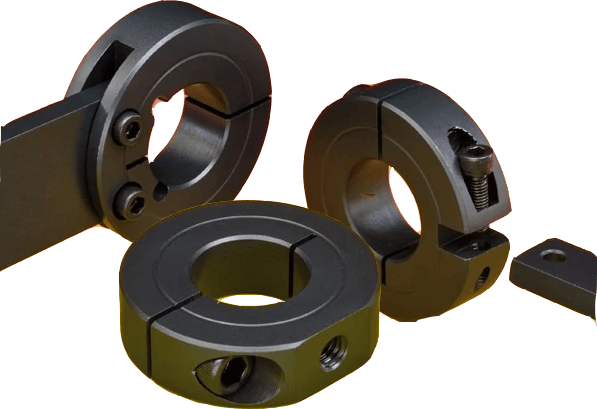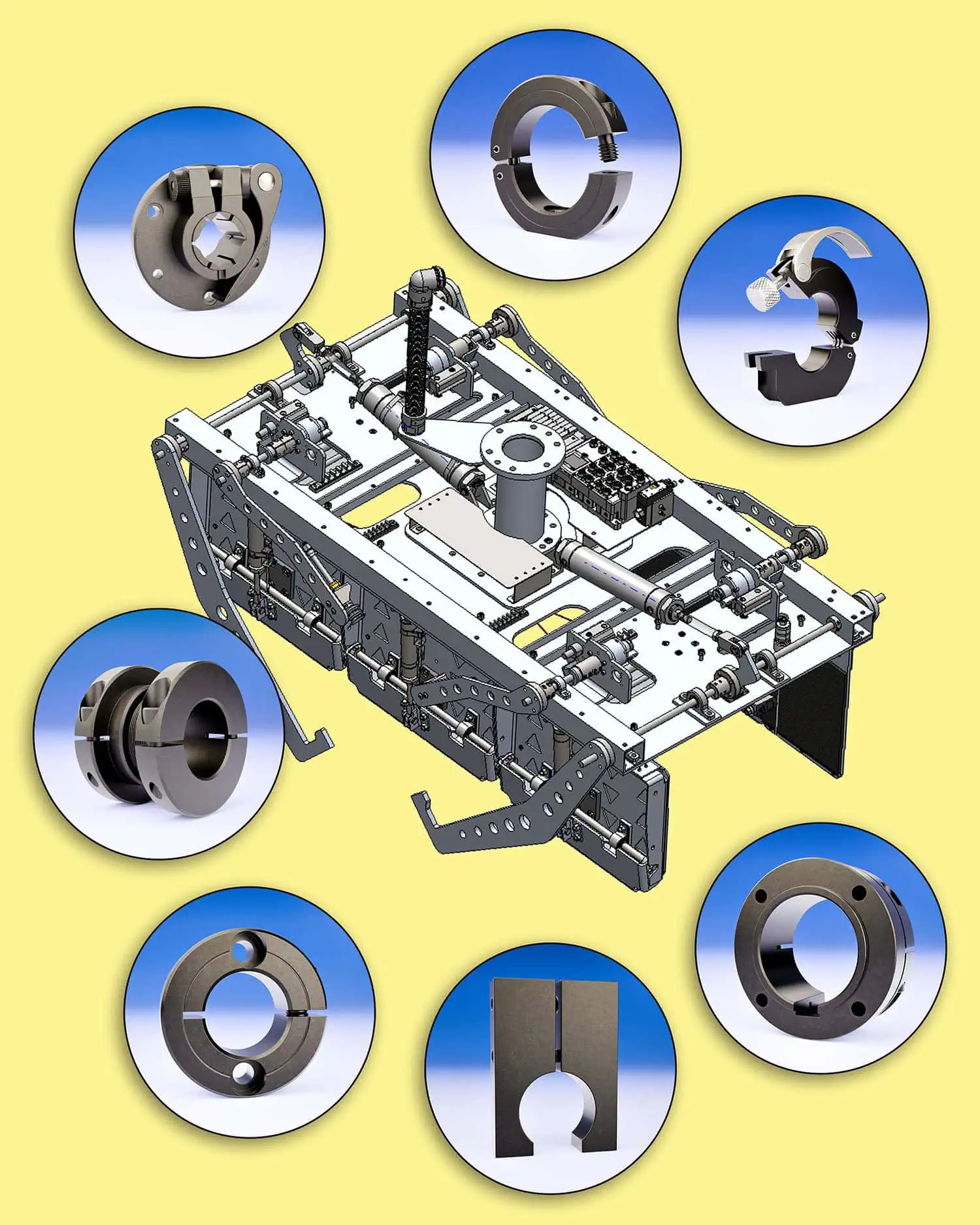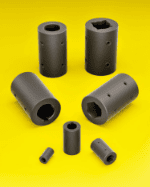Shaft Collar Types: Set Screw, One-Piece Clamp, Two-Piece Clamp, and Hinge
Selecting a shaft collar for your rotating machinery is about more than just the right fit; the proper collar will enhance the performance and longevity of your equipment. With the wide variety of shaft collars on the market, each with its own unique features, benefits, and applications, it’s important to understand what sets them apart.
In this guide, we’ll help you gain an understanding of the differences between set screw, one-piece, two-piece, and hinge shaft collars, focusing on aspects like axial holding power, price, installation, accessibility, and maintenance requirements.
Selecting the Best Shaft Collar for Your Application
To choose the right shaft collar for your project, you’ll base your decision on several factors specific to your application.
|
Shaft Collar Types Comparison |
||||
| Set Screw | One-Piece Clamp/Single Split | Two-Piece Clamp/Double Split | Hinge | |
| Holding Power | Low | Moderate | High | High |
| Assembly and Installation |
|
|
|
|
| Maintenance | Minimal | Minimal | Minimal | Minimal |
| Price | $
Low cost |
$
Moderate |
$$
More expensive |
$$
More expensive |
Set Screw Shaft Collars
This type of collar is a solid ring without relief cuts or splits. It uses a recessed screw within the collar ring that tightens directly onto the shaft. When the screw impinges on the shaft, it creates the holding power. Because of the marks this creates on the shaft surface, set screw shaft collars are best for applications in which the collar won’t require frequent adjustments. It achieves optimal holding strength when the material of the screw is harder than that of the shaft.
One-Piece Clamp/Single Split Shaft Collars
Utilizing a single clamping screw to compress and tighten the collar around the shaft, a one-piece shaft collar offers a secure grip without damaging the shaft surface. The screw for a single split collar clamp evenly distributes clamping force around the collar’s circumference for a uniform hold.
Two-Piece Clamp/Double Split Shaft Collar
Consisting of two halves, the two-piece collar’s parts clamp around a shaft, providing a uniform grip and superior clamping force. It’s an ideal choice for applications requiring strong holding power and flexibility in placement, as well as environments that limit the accessibility of a shaft.
Hinge Shaft Collars
This collar variety combines the advantages of one- and two-piece collars, using a hinge to connect its two parts. You position the open collar as needed along a shaft, close it, and then use a captive clamping screw to secure it with a strong hold and an even clamp. Because the screw won’t fall out, hinge shaft collars are ideal for applications in compact spaces where it isn’t possible to hold the clamping screw in position.
Contact Our Experts for Premium Shaft Collar Solutions
Choosing between set screw, one-piece, two-piece, and hinge shaft collars comes down to understanding your application’s requirements. Whether you prioritize ease of installation, holding power, or cost, Stafford Manufacturing Corp. has a shaft collar to fit your needs.
We invite you to explore our extensive catalog for a look at our shaft collar offerings. Contact our team with questions, or request a quote today to start your project.




